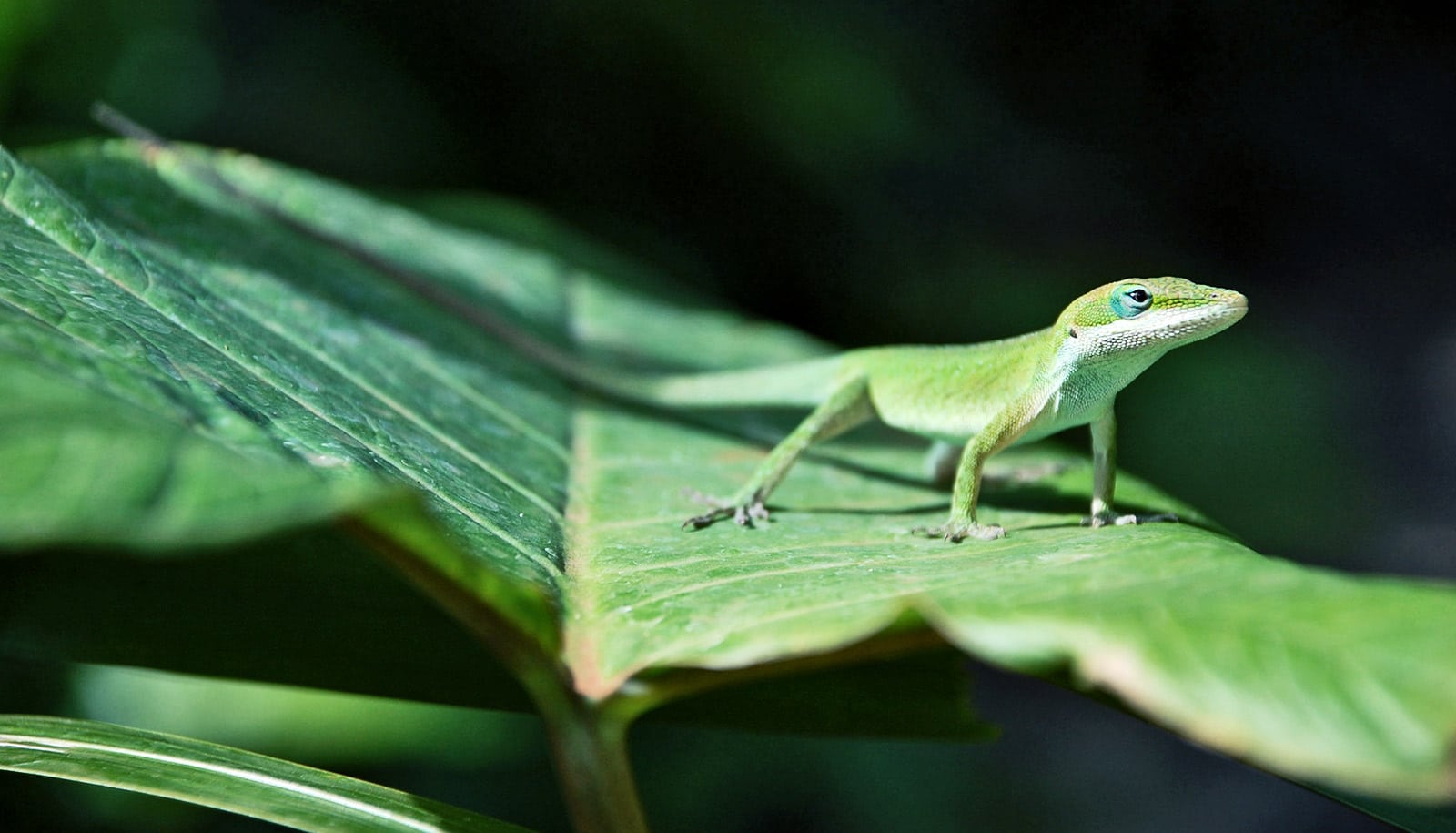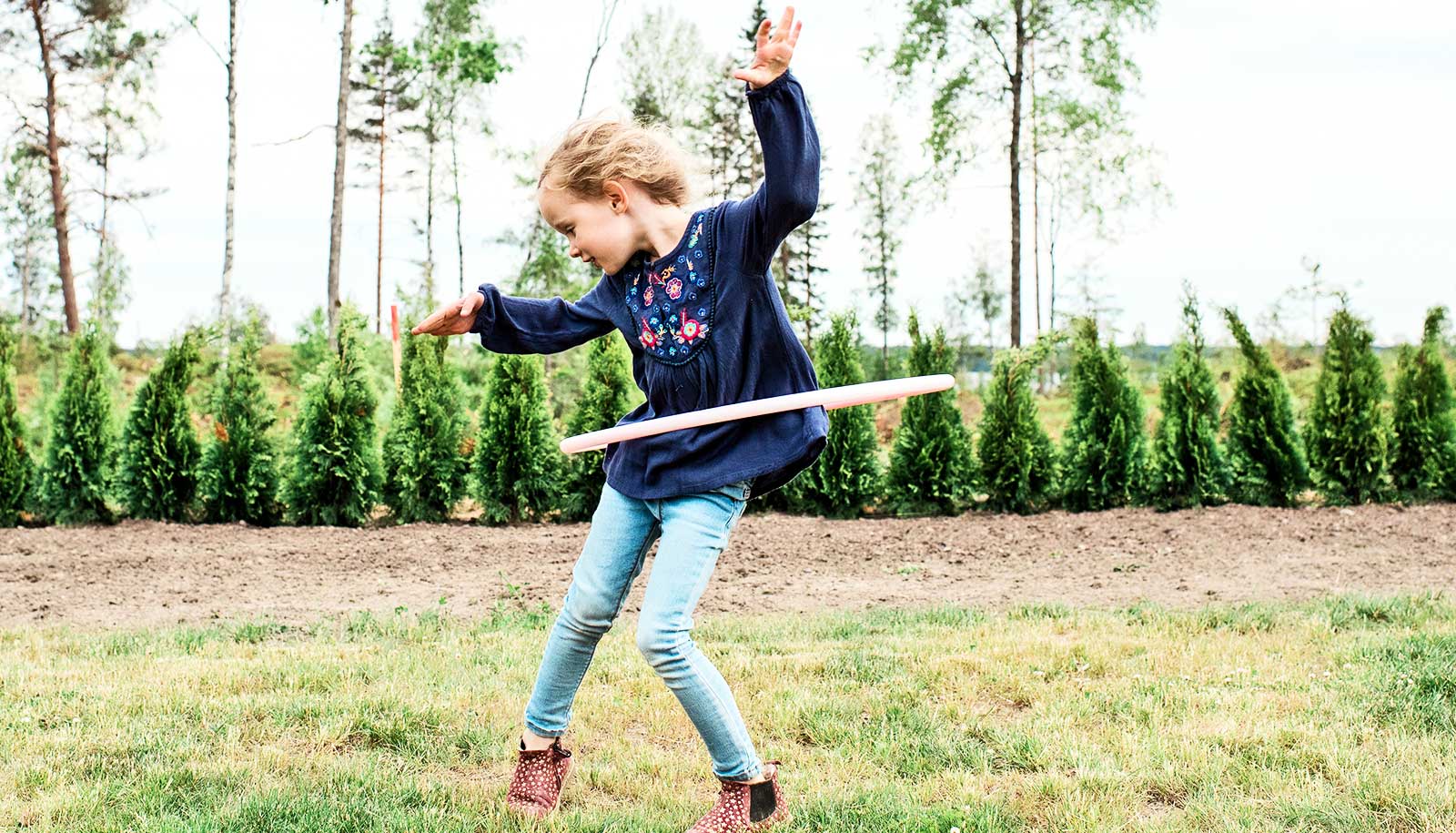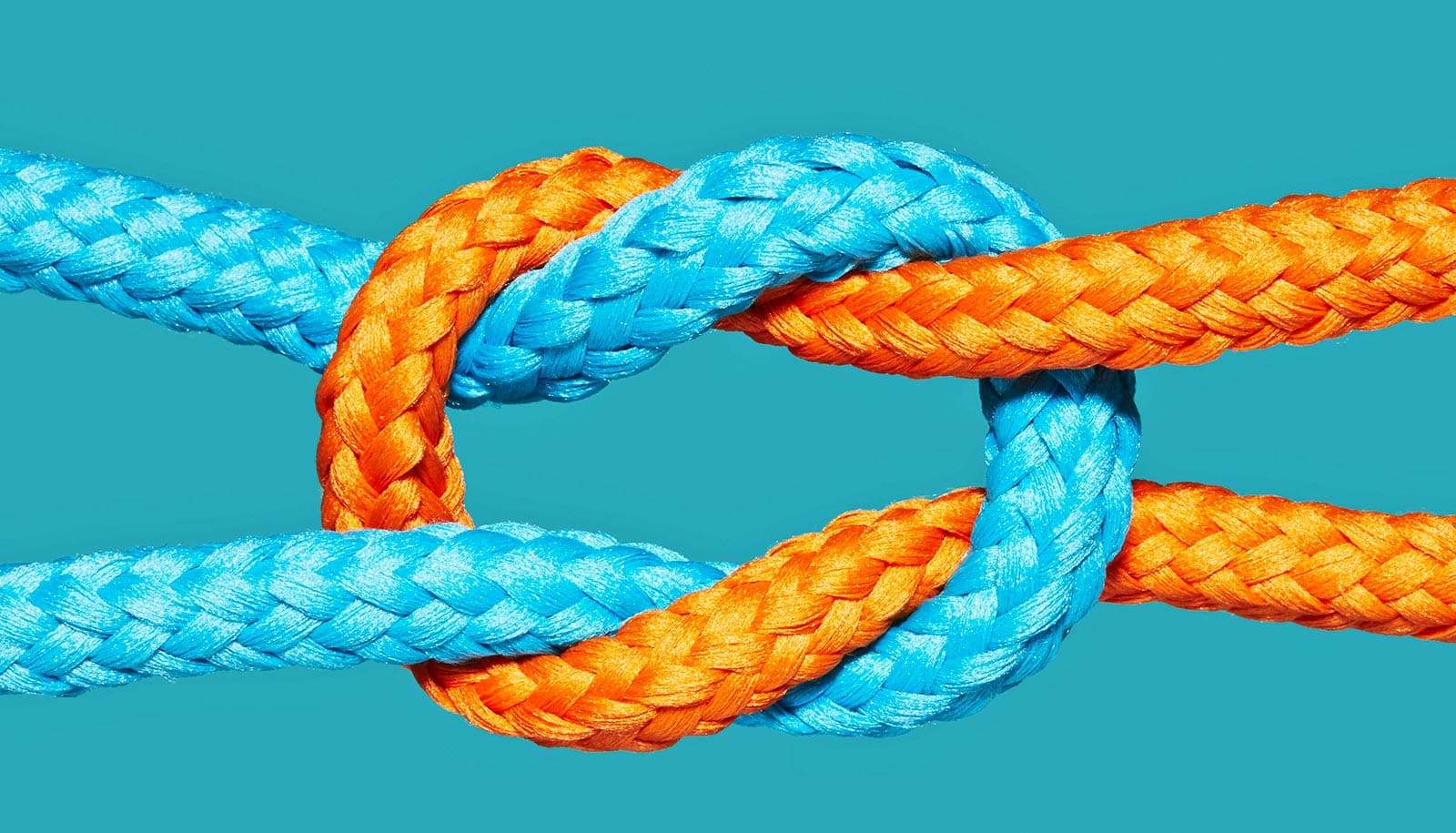While geckos have amazing adhesive strength, a new theoretical study finds that adhesion has its limits and geckos still experience falls.
Geckos climb vertically up trees, walls, and even windows, thanks to pads on the digits of their feet that employ a huge number of tiny bristles and hooks.
Scientists have long marveled at the gecko’s adhesive capabilities, which have been described as 100 times more than what is needed to support their body weight or run quickly up a surface.
“…in some cases geckos don’t have enough adhesion to save themselves”
But the new theoretical study examines, for the first time, the limits of geckos’ gripping ability in natural contexts.
The study reports there are circumstances—such as when geckos fear for their lives, leap into the air, and must grab on to a leaf below—when they need every bit of that fabled adhesive ability, and sometimes it’s not enough.
“Geckos are notoriously described as having incredible ability to adhere to a surface,” says Karl Niklas, professor of plant evolution in Cornell University’s Plant Biology Section in the School of Integrative Plant Science and a coauthor of the paper.
“The paper shows that [adhesive capability] might be exaggerated, because geckos experience falls and a necessity to grip a surface like a leaf that requires a much more tenacious adhesion force; the paper shows that in some cases the adhesive ability can be exceeded,” Niklas says.
In the theoretical study, the researchers developed computer models to understand if there are common-place instances when the geckos’ ability to hold on to surfaces might be challenged, such as when canopy-dwelling geckos are being chased by a predator and are forced to leap from a tree, hoping to land on a leaf below.
How to control the forces that let geckos cling
The researchers incorporated ecological observations, adhesive force measurements, and body size and shape measurements of museum specimens to conduct simulations. They also considered the biomechanics of the leaves, the size of the leaves, and the angles on the surface that geckos might land on to determine impact forces. Calculations were also based on worst-case scenarios, where a gecko reaches a maximum speed when it is no longer accelerating, called “terminal settling velocity.”
“Leaves are cantilevered like diving boards and they go through harmonic motion [when struck], so you have to calculate the initial deflection and orientation, and then consider how does that leaf rebound and can the gecko still stay attached,” Niklas says.
The final result showed that in some cases geckos don’t have enough adhesion to save themselves, he adds.
Higham and Russell are planning to travel to French Guiana to do empirical adhesive force studies on living geckos in native forests.
The basic research helps people better understand how geckos stick to surfaces, and has the potential for future applications that mimic such biological mechanisms.
Gecko feet inspire a new way to clean up dust
The study appears in Journal of the Royal Society Interface. Additional coauthors are from the University of California, Riverside and the University of Calgary in Canada.
The National Science Foundation funded the study.
Source: Cornell University



